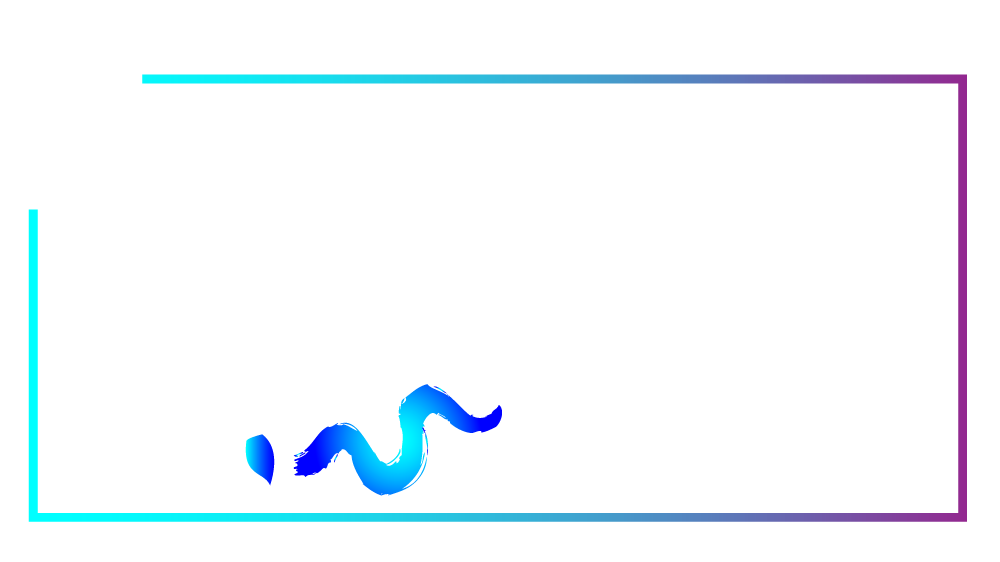How art can be a powerful medium to convey these cultural narratives.
November 20, 2023
Art as a Reflection of Society
Art has long been considered a powerful mirror that reflects the nuances and intricacies of society. Through various artistic mediums, artists have the ability to capture and depict the realities, struggles, and triumphs of the world they inhabit. Whether it is through painting, sculpture, photography, or even performance art, artists have a unique ability to delve into the depths of society and showcase its multifaceted nature.
Artistic expressions that depict societal issues often serve to challenge prevailing norms and provoke thought among viewers. By highlighting social injustices, inequalities, or even the facets of human existence, artists are able to bring attention to these pressing matters and inspire dialogue. Through their creations, they not only hold up a mirror to society but also provide a platform for critical reflection, encouraging viewers to question, analyze, and engage with the world around them. Through these artistic reflections, society can confront its own complexities and strive for progress.
Art as a Visual Language
Art has long served as a universal language, transcending cultural and linguistic barriers. Through its inherent visual nature, art has the ability to communicate complex ideas and emotions in a way that words often cannot. Whether it is a painting, sculpture, or photograph, art has the power to evoke deep feelings and provoke thoughtful contemplation.
Artists use various elements and techniques to convey their messages. They manipulate color, form, line, and texture to create visual compositions that speak directly to the viewer. The use of symbols and metaphors adds further depth to the language of art, allowing for multiple layers of interpretation and meaning. In this way, art becomes a bridge between the artist's intentions and the viewer's understanding, inviting us to engage with and interpret the work in our own unique ways. This visual language of art not only facilitates personal expression but also invites dialogue and encourages new perspectives, making it a powerful medium of communication across cultures and societies.
The Role of Art in Cultural Expression
Art has long been recognized as a powerful tool for cultural expression. Through various artistic mediums such as painting, sculpture, music, and dance, individuals and communities are able to convey their thoughts, emotions, and experiences in unique and creative ways. Art has the ability to transcend language barriers and reach people on a universal level, making it an essential element of cultural expression.
In many societies, art serves as a reflection of the values, beliefs, and traditions that shape a community's identity. Artists often draw inspiration from their cultural heritage, using their artwork to explore and celebrate their roots. By delving into their own cultural narratives, artists can not only deepen their understanding of their identity but also contribute to a larger dialogue surrounding cultural expression. Through their artistic creations, these individuals become agents of cultural preservation, ensuring that their traditions and customs are not forgotten or overlooked in an ever-changing world.
Exploring Artistic Narratives
Artistic narratives have long served as a medium for deep exploration and contemplation. Through visual storytelling, artists are able to convey complex emotions, ideas, and experiences in a way that leaves a lasting impact on the viewer. These narratives often offer a glimpse into the artist's perspective, inviting us to reflect on our own lives and the world around us.
One of the remarkable aspects of artistic narratives is their ability to transcend language and cultural barriers. Regardless of our background or beliefs, we can connect with the universal themes and messages conveyed through art. Whether it be a painting, a sculpture, or a piece of performance art, the narrative weaved by the artist draws us in, inspiring us to contemplate and question our own perceptions. Artistic narratives have the power to transport us to different worlds, challenge our assumptions, and provoke meaningful conversations.
The Power of Visual Storytelling
Visual storytelling has the remarkable power to captivate and engage viewers in a way that words alone cannot. Through the use of images, artists can convey complex narratives, evoke emotions, and transport their audience into different worlds. Whether through paintings, photographs, or digital media, visual storytelling transcends language barriers and cultural differences, allowing individuals from diverse backgrounds to connect and interpret the artwork in their own unique ways.
One of the inherent strengths of visual storytelling lies in its ability to convey universal themes and experiences. By depicting human emotions, struggles, and triumphs, artists create a visual language that resonates with people from different walks of life. Visual storytelling allows viewers to step into the shoes of the characters portrayed, fostering empathy and understanding. It has the power to spark conversations and ignite social change by shedding light on important issues that may be overlooked or underrepresented in mainstream media. Through the visual medium, artists can challenge prevailing narratives, advocate for marginalized communities, and inspire viewers to question the status quo.
Art as a Catalyst for Cultural Change
Art has long been recognized as a powerful catalyst for cultural change. Through its ability to evoke emotions, challenge perspectives, and provoke dialogue, art has the capacity to shape and reshape societal norms, values, and beliefs. Artists, in their various forms of expression, have been the driving force behind numerous social and cultural movements throughout history.
One example of art's transformative impact on culture can be seen in the feminist art movement of the 1960s and 1970s. Through their artwork, feminist artists aimed to challenge and overturn long-held gender stereotypes and inequality. Their provocative and thought-provoking pieces not only became a platform for women's voices but also served as a catalyst for crucial conversations surrounding gender roles and power dynamics within society. By pushing boundaries and breaking taboos, these artists paved the way for a more inclusive and egalitarian society.
The Influence of Art on Identity and Belonging
Art has the power to deeply impact an individual's sense of identity and belonging. Through artistic expression, individuals can explore and assert their personal identity, while also finding a sense of connection and community with others. Art provides a platform for self-expression, allowing individuals to represent their unique experiences, emotions, and perspectives. Whether through painting, sculpture, photography, or other artistic forms, individuals can communicate their identities in ways that may not be easily captured by words alone. By sharing their art with others, they create opportunities for dialogue, empathy, and understanding, fostering a sense of belonging within their communities.
Moreover, art can also serve as a powerful tool for exploring collective identity and fostering a sense of belonging within communities. Artistic creations often reflect the history, traditions, and values of a particular culture or group of people. Through art, individuals can celebrate their shared heritage, strengthen bonds within their community, and reinforce a sense of belonging. Additionally, art can also be used to challenge societal norms and stimulate dialogue about issues related to identity and belonging. By questioning existing narratives and representing marginalized voices, art can inspire social change and promote inclusivity, ultimately shaping a more diverse and inclusive society.
Art as a Medium for Preserving Cultural Heritage
Art has long served as a powerful medium for preserving cultural heritage. Through various art forms such as paintings, sculptures, and crafts, societies have been able to capture and communicate their traditions, values, and history from one generation to the next. These artistic creations serve as tangible links to the past, allowing future generations to witness and learn about their cultural roots.
One of the key aspects of art in preserving cultural heritage is its ability to visually represent the customs, rituals, and beliefs of a particular community. These artworks often depict important events, mythologies, and symbols that hold significant meaning within a culture. By expressing these elements through art, cultural heritage is not only preserved but also made accessible to a wider audience, including those who may not have direct exposure to the culture itself. Consequently, art becomes a tool for both educating and fostering appreciation for diverse traditions and customs.
Art as a Bridge Between Cultures
Art has long been recognized as a universal language that transcends cultural boundaries. It has the unique ability to bridge the gap between different cultures, creating an avenue for understanding and appreciation. Through the shared experience of art, people from diverse backgrounds can come together and find common ground.
One of the ways art serves as a bridge between cultures is by showcasing the distinctive perspectives and values of different societies. Artists often draw inspiration from their own cultural heritage, infusing their works with elements that are deeply rooted in their identity. This allows viewers from other cultures to gain insight into the richness and complexity of a foreign culture, fostering a sense of empathy and respect. In this way, art becomes a powerful tool for breaking down stereotypes and promoting intercultural dialogue.
The Impact of Art on Social Awareness and Activism
Art has long been recognized as a powerful tool for raising social awareness and promoting activism. Through various artistic forms, such as paintings, sculptures, and installations, artists have the ability to depict and challenge societal injustices, giving voice to marginalized communities and shedding light on pressing issues. Art not only serves as a visual representation of these concerns, but also as a catalyst for dialogue and change. The emotive nature of art can evoke deep emotions and foster empathy among viewers, compelling them to take action and contribute to social movements.
By combining visual elements and symbolism, artists are able to communicate complex ideas and narratives, bridging the gap between different cultures, languages, and experiences. Art has the unique ability to transcend linguistic and cultural barriers, reaching a broad audience and creating meaningful connections. Moreover, art allows for the exploration of diverse perspectives and alternative narratives, challenging mainstream ideologies and encouraging critical thinking. When art is used as a platform for social awareness and activism, it becomes a force for promoting understanding, facilitating dialogue, and inspiring collective action.
Also in The Know

Navigating Art and Ancestry: The Life of New Zealand Artist Clinton Hewett
February 05, 2024


